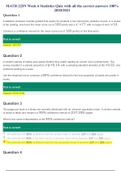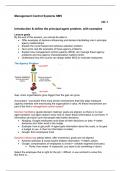Prüfung
HTHSCI 1RR3 TEST 2 (Units 4,5,6) || With Questions & 100% Accurate Answers
- Kurs
- Hochschule
HTHSCI 1RR3 TEST 2 (Units 4,5,6) || With Questions & 100% Accurate Answers HTHSCI 1RR3 TEST 2 (Units 4,5,6) || With Questions & 100% Accurate Answers Trends of precious work in professions: - ANSWER - - more than 1 in 5 Canadian professionals have precious jobs (2018). - Healthcare professiona...
[ Mehr anzeigen ]












